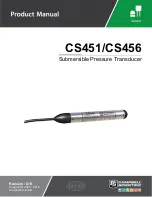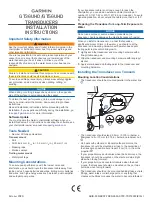
SWRS046H – NOVEMBER 2006 – REVISED MARCH 2015
RF Transmit (continued)
All measurements were performed using the two-layer PCB CC1020EMX reference design. See
. The electrical
specifications given for 868 MHz are also applicable for 902 to 928 MHz. T
A
= 25°C, AVDD = DVDD = 3.0 V,
f
C
= 14.7456 MHz if nothing else stated.
PARAMETER
MIN
TYP
MAX
UNIT
CONDITION
47 to 74, 87.5 to 118, 174 to
At maximum output power, +10/+5 dBm
–54
dBm
230, 470 to 862 MHz
at 433/868 MHz.
To comply with EN 300 220, FCC
9 kHz to 1 GHz
–36
dBm
CFR47 part 15 and ARIB STD-T96 an
external (antenna) filter, as implemented
in the application circuit in
must be used and tailored to each
individual design to reduce out-of-band
spurious emission levels.
Spurious emissions can be measured as
EIRP values according to EN 300 220.
The antenna (SMAFF-433 and SMAFF-
Spurious emission,
868 from R.W. Badland) plays a part in
radiated CW
attenuating the spurious emissions.
1 to 4 GHz
–30
dBm
If the output power is increased using an
external PA, a filter must be used to
attenuate spurs below 862 MHz when
operating in the 868 MHz frequency
band in Europe. Application Note
AN036
CC1020/1021 Reducing Spurious
Emission
(
) presents and
discusses a solution that reduces the TX
mode spurious emission close to 862
MHz by increasing the REF_DIV from 1
to 7.
433 MHz
54 + j44
Ω
Optimum load
Transmit mode. For matching details see
868 MHz
15 + j24
Ω
impedance
915 MHz
20 + j35
Ω
4.5
RF Receive
All measurements were performed using the two-layer PCB CC1020EMX reference design. See
. The electrical
specifications given for 868 MHz are also applicable for 902 to 928 MHz. T
A
= 25°C, AVDD = DVDD = 3.0 V,
f
C
= 14.7456 MHz if nothing else stated.
PARAMETER
MIN
TYP
MAX UNIT
CONDITION
12.5 kHz channel spacing, optimized
Sensitivity is measured with PN9
–114
dBm
selectivity, ±2.025 kHz freq. deviation
sequence at BER = 10
−
3
12.5 kHz channel spacing:
12.5 kHz channel spacing, optimized
Receiver sensitivity,
–118
dBm
2.4 kBaud, Manchester coded data.
sensitivity, ±2.025 kHz freq. deviation
433 MHz, FSK
25 kHz channel spacing:
25 kHz channel spacing
–112
dBm
4.8 kBaud, NRZ coded data, ±2.475
kHz frequency deviation.
500 kHz channel spacing
–96
dBm
500 kHz channel spacing:
12.5 kHz channel spacing, ±2.475 kHz
153.6 kBaud, NRZ coded data, ±72
–116
dBm
freq. deviation
kHz frequency deviation.
Receiver sensitivity,
See
and
for
25 kHz channel spacing
–111
dBm
868 MHz, FSK
typical sensitivity figures at other
500 kHz channel spacing
–94
dBm
data rates.
2.4 kBaud
–116
dBm
Sensitivity is measured with PN9
Receiver sensitivity,
sequence at BER = 10
−
3
433 MHz, OOK
153.6 kBaud
–81
dBm
Manchester coded data.
4.8 kBaud
–107
dBm
Receiver sensitivity,
See
for typical sensitivity
868 MHz, OOK
figures at other data rates.
153.6 kBaud
–87
dBm
Saturation
FSK: Manchester/NRZ coded data
(maximum input
FSK and OOK
10
dBm
OOK: Manchester coded data
level)
BER = 10
−
3
The receiver channel filter 6 dB
System noise
bandwidth is programmable from
9.6 to 307.2
kHz
bandwidth
9.6 kHz to 307.2 kHz. See
Copyright © 2006–2015, Texas Instruments Incorporated
Specifications
9
Product Folder Links:










































